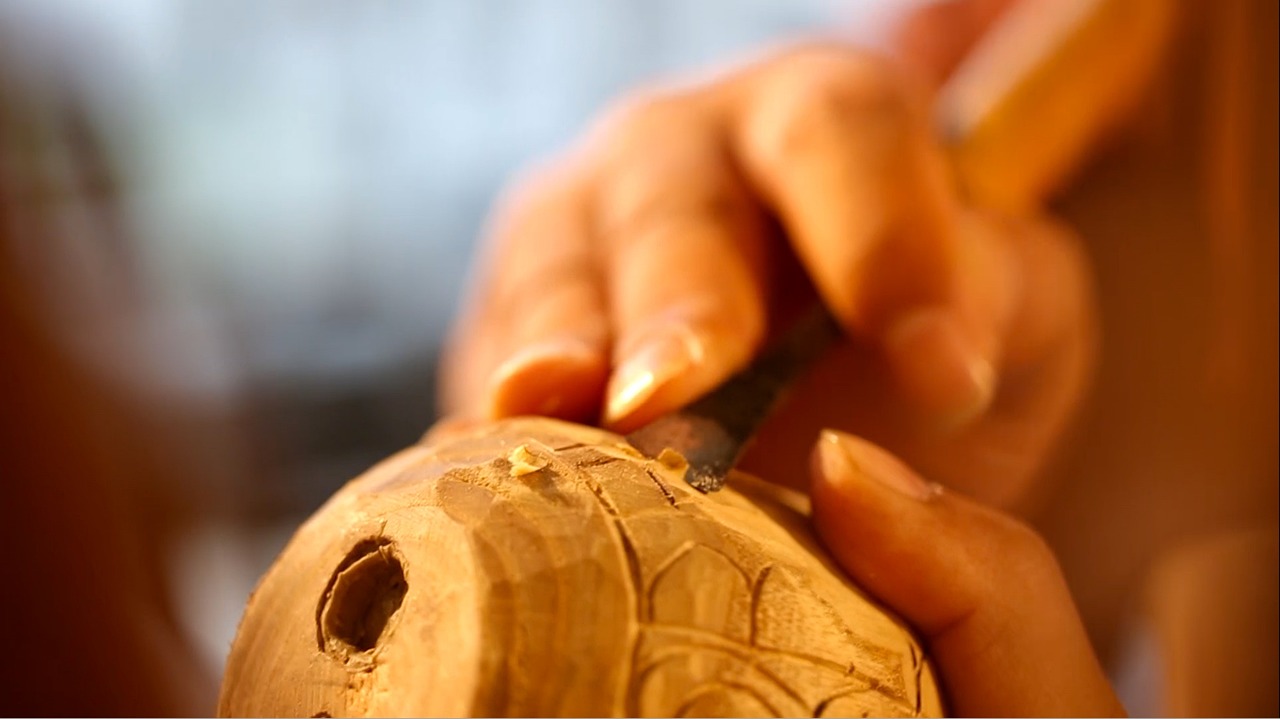Wood carving and woodworking are two distinct fields, despite their similarities. One notable difference lies in the tools used in each practice. Woodcarving tools typically have thinner cutting edges, characterized by bevels. These tools are often made from a high carbon steel grade known as 1095C, which undergoes tempering or heat treatment to ensure the steel remains sharp. On the Rockwell Black Diamond hardness testing device, the steel grade typically measures between .59 and .62. Additionally, wood carving tools tend to have shorter handles compared to those used in woodworking.
The most popular types of wood carving tools include the following: straight chisel, featuring a flat edge; straight gouge, having a curved cutting edge with varying depths; short bent, with a spoon-like dip for quick deep cuts; long bent, capable of making long deep cuts; straight skew, with a diagonal cutting edge; parting tool or veiner, a furrowing tool with a cutting edge resembling a “v”; and fish tail, flaring out on both left and right tips like a fish’s tail. These tools come in different sizes, ranging from 1/8″ to 1″ in terms of their cutting edges.
In addition to the wood carving tools, other implements for carving include a mallet for striking the tools, sharpening stones for blade honing when dull, handheld tools for chip carving or relief work, and carving knives for finishing, detailing work, and chip carving.
Carving sets are conveniently pre-assembled and provide novices with all the necessary individual tools for a specific project. An ideal basic set should consist of a mallet, sharpening stone, rasp, and the individual tools.
BONUS: Japanese Wood Carving Tools
Japanese Chokokuto (Woodcut Tools)
Japanese woodcut tools, similar to the carpentry tools or martial art swords of Japan, are renowned worldwide not only for their exceptional sharpness and durability, but also for the remarkable artistry involved in their production.
Chokokuto, through a process of trial and error spanning centuries, showcase a harmonious blend of design and practicality. The refining of designs, materials, and manufacturing techniques has resulted in the creation of sophisticated tools that possess remarkable functionality. Despite their apparent simplicity, these tools possess considerable durability and longevity, provided they are used and cared for appropriately.
Master Craftsmen
Our Chokokuto is manufactured by a Tokyo firm that has a long history in metal work, spanning several hundred years. In Japan, they are renowned as master craftsmen, and their products are available in various shops across the country, sold under different brands. Their exceptional quality is unmatched.
Chokokuto Uses
When carving wood or linoleum, utilize these tools. In case you need to carve end-grain wood block or Resingrave, make use of Engraving Tools.
The Hangi To and Sho To knives are utilized for delineating regions that will be preserved and printed. Sankaku To v-gouges are frequently employed for creating slender lines and captivating textures through carving.
When outlining, creating texture, and clearing away wood, Komasuki and Maru To (u-gouges) are commonly used. Cutting curved lines is generally easier for most people with Komasuki or Maru To compared to Sankaku To.
To clear and make textural marks, as well as remove tall, sharp ridges left by Maru To or Komasuki cuts, Aisuki and Hira To (chisels) are employed.




